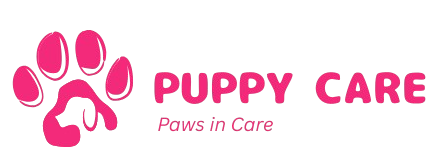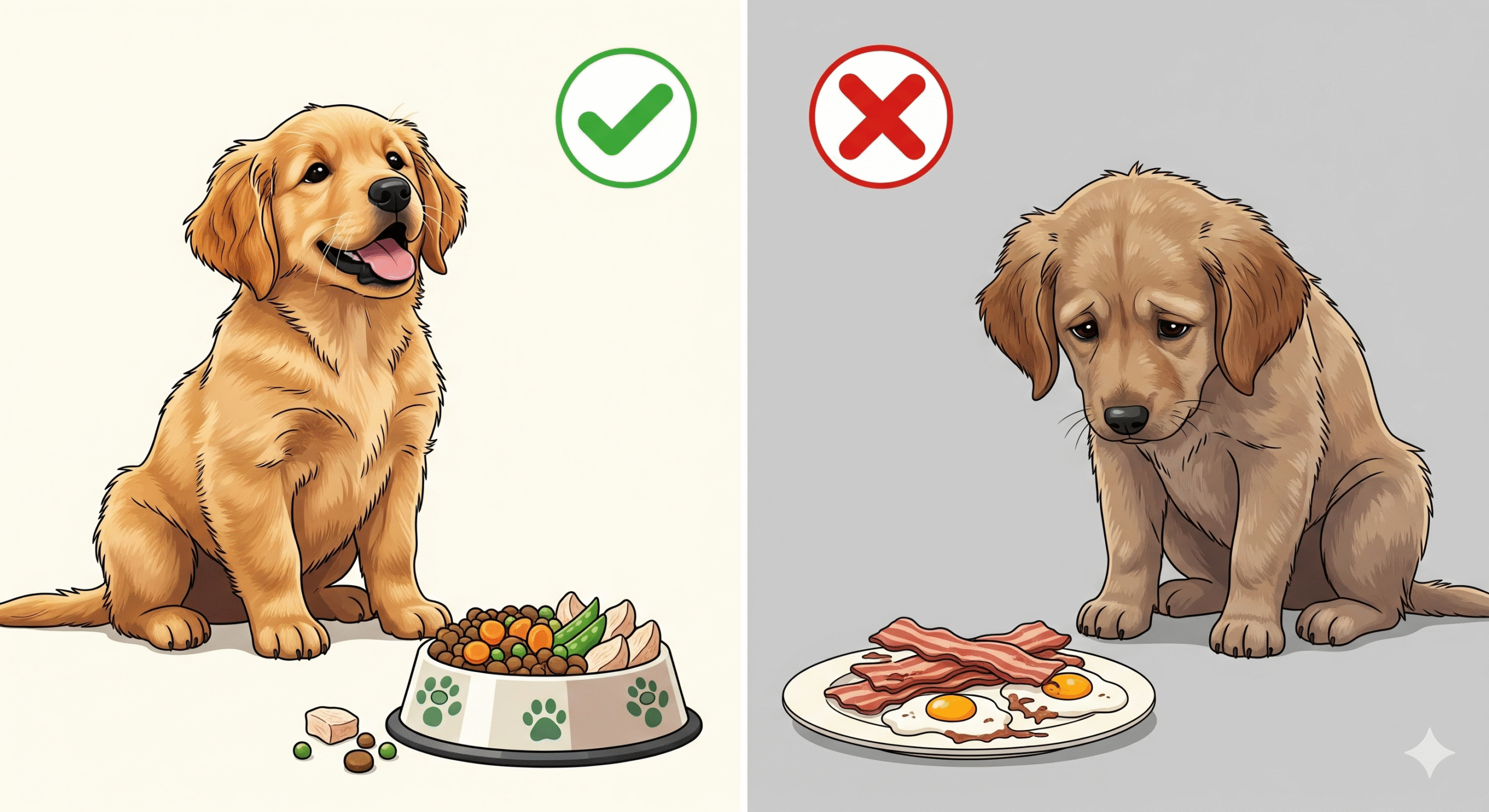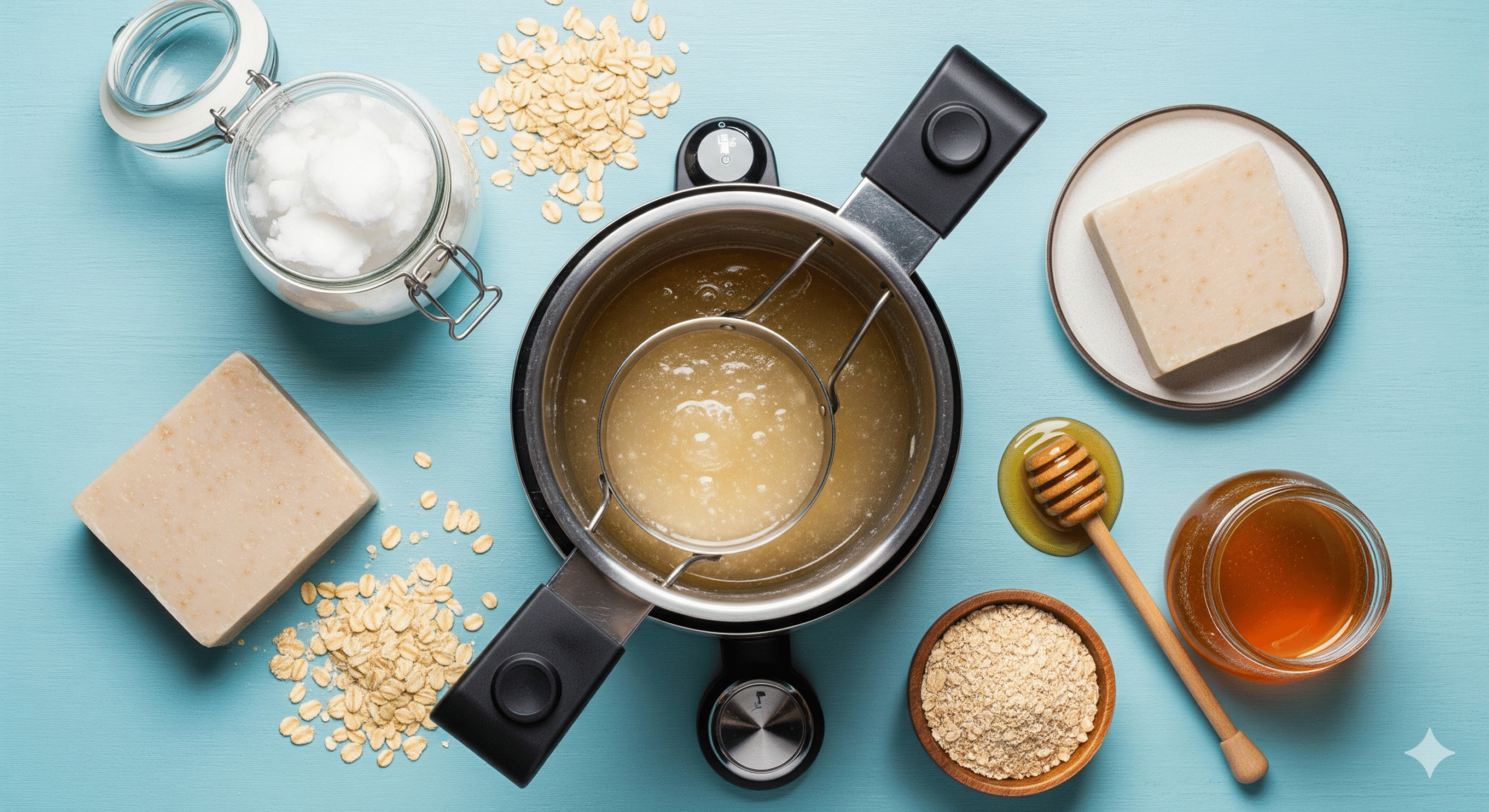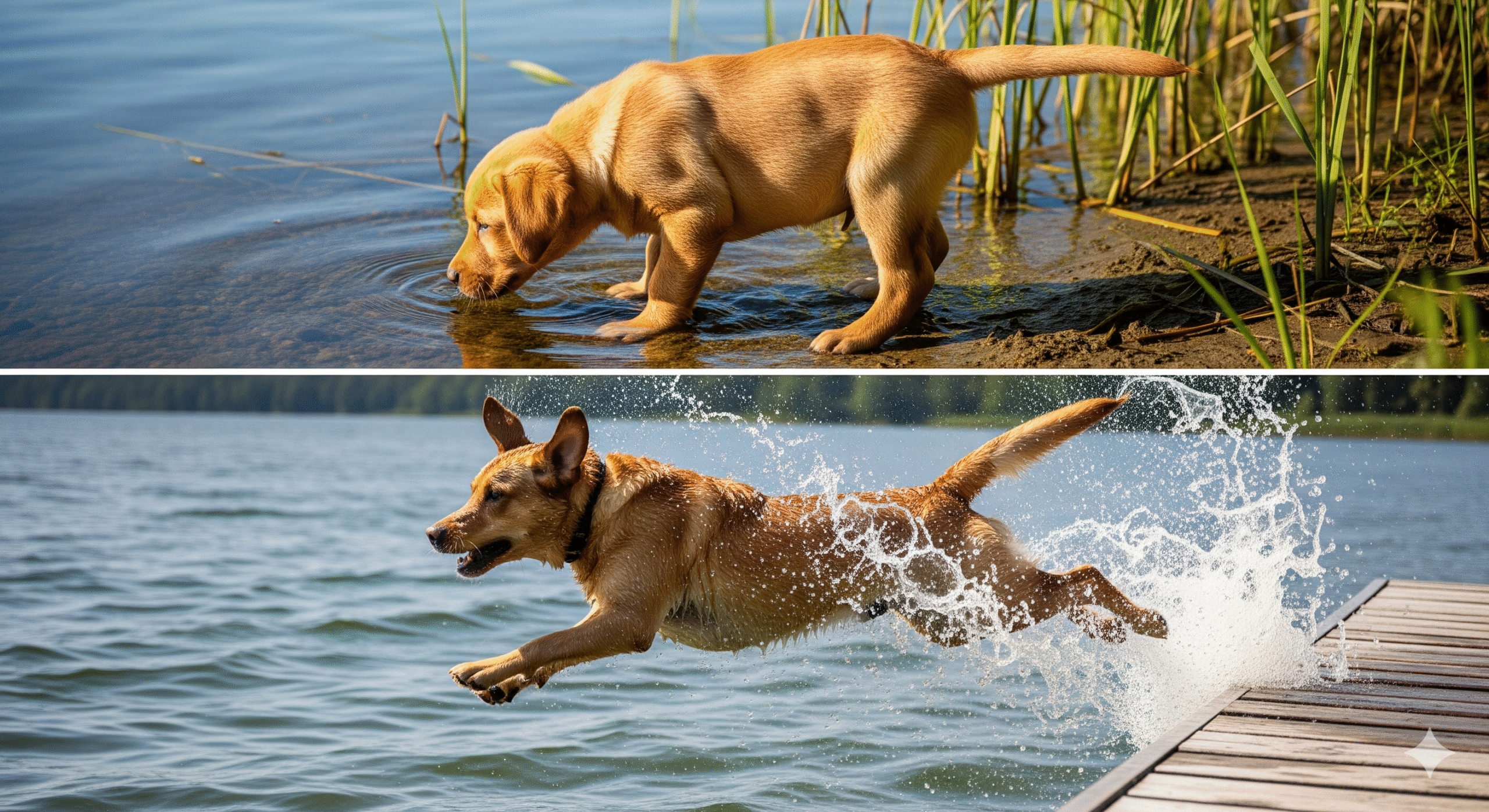Watching your puppy constantly scratch, lick, and chew at their skin is heartbreaking. While fleas or environmental allergens are often the first suspects, the root cause might be hiding in their food bowl. Puppy food allergies are more common than many pet owners realize and can turn your furry friend’s life into a cycle of discomfort.
Distinguishing a true food allergy from a simple intolerance or other skin condition is the first critical step toward finding relief. This comprehensive guide will help you decode the signs of puppy food allergies, understand the science behind them, and navigate the process of finding safe, effective food alternatives that will stop the itch and get your pup back to being their playful, happy self.
Food Allergy vs. Food Intolerance: What’s the Difference? 🔬
It’s crucial to understand this distinction, as the symptoms and management can differ.
- Food Allergy: This is an immune system response. When a puppy has a food allergy, their immune system mistakenly identifies a specific protein in their food as a harmful invader (like a virus). This triggers an inflammatory response, which most commonly manifests as skin problems (itchiness, hives) and sometimes gastrointestinal issues. The reaction can occur even with a tiny amount of the allergen.
- Food Intolerance: This is a digestive issue, not an immune one. It’s akin to lactose intolerance in humans. A food intolerance means your puppy lacks the proper enzyme to digest a certain ingredient, leading to stomach upset, gas, or diarrhea. It is generally less severe than a full-blown allergic response.
For the purposes of this guide, we will focus on true immune-mediated food allergies, which are often the culprit behind chronic skin conditions in puppies.
The Most Common Signs of Puppy Food Allergies 🚨
The symptoms of puppy food allergies can be diverse and often overlap with other conditions. The most telling signs are often chronic and persist year-round, regardless of the season.
Top Cutaneous (Skin) Signs:
- Persistent Itching (Pruritus): This is the #1 sign. Itching often focuses on the paws, ears, armpits, groin, and around the eyes and mouth.
- Chronic Skin Infections: Recurrent hot spots, bacterial infections (pyoderma), and yeast infections in the ears and on the skin are common secondary effects of allergies. The inflammation and scratching break down the skin’s natural barrier.
- Hives (Urticaria): Raised, red welts on the skin.
- Red, Inflamed Skin: Especially on the belly, inside the ears, and between the toes.
- Hair Loss: Caused by constant scratching, chewing, and licking.
Gastrointestinal Signs:
- Chronic or Recurring Diarrhea
- Frequent Vomiting or Regurgitation
- Increased Gas
- Frequent licking of the lips/air (sign of nausea)
Other Signs:
- Chronic Ear Infections: This is a huge red flag for allergies. If your puppy has recurring ear issues, a food allergen is a likely culprit.
- Poor Coat Quality: A dry, dull, or scruffy coat.
The Most Common Culprits: What Puppies Are Allergic To 🥩🌽
Contrary to popular belief, grains are not the most common allergens. The vast majority of puppy food allergies are reactions to animal proteins.
Top Protein Allergens:
- Beef
- Dairy
- Chicken
- Egg
- Lamb
- Fish
Other Potential Triggers:
- Wheat
- Soy
- Corn
It’s important to note that a puppy can develop an allergy to any protein they have been exposed to, even if they’ve been eating it for months without an issue. Allergies develop over time with repeated exposure.
The Gold Standard for Diagnosis: The Elimination Diet 🧪
If you suspect puppy food allergies, the absolute worst thing you can do is randomly switch from one over-the-counter food to another. This makes it impossible to identify the true allergen. The only way to definitively diagnose a food allergy is through a food elimination trial.
This process must be done under veterinary guidance. Here’s how it works:
- Select a Novel Protein or Hydrolyzed Diet: Your vet will recommend a prescription diet. This is either:
- Novel Protein Source: A protein your puppy has never eaten before (e.g., venison, kangaroo, duck, or rabbit).
- Hydrolyzed Protein Diet: The protein molecules in the food are broken down into pieces so small that the immune system no longer recognizes them as an allergen.
- Commit for 8-12 Weeks: The trial must be strict and last a minimum of 8 weeks, as it can take that long for all allergens to leave the system and for the skin to heal. This means no other foods, treats, flavored medications, or table scraps. Only the prescribed diet and water.
- Track Symptoms: Keep a journal of your puppy’s itching, skin condition, and bowel movements. Take “before” photos.
- The “Challenge”: If the symptoms resolve, the next step is to “challenge” your puppy by reintroducing their old food. If the symptoms return within hours or days, the diagnosis is confirmed.
Safe Alternatives: Choosing the Right Food for Allergies 🛒
Once an allergy is diagnosed, the solution is lifelong avoidance of the trigger allergen. Here are the types of safe alternatives your vet may recommend.
1. Prescription Hydrolyzed Protein Diets 🏥
How they work: These diets are considered the gold standard for elimination trials and long-term management. The protein source (often soy or chicken) is hydrolyzed, meaning it’s broken down into tiny fragments that are invisible to the immune system.
Examples: Royal Canin Hydrolyzed Protein, Purina Pro Plan HA, Hill’s z/d.
2. Novel Protein Diets 🦌
How they work: These diets use a single, unique protein source that the puppy has never been exposed to, giving the immune system nothing to react against.
Examples: Venison and potato, kangaroo and oats, alligator and chickpea, duck and pea.
Important Note: Many over-the-counter “novel” diets are contaminated with trace amounts of common proteins during manufacturing. Prescription novel protein diets are produced with stricter protocols to avoid this.
3. Limited Ingredient Diets (LID) 📋
How they work: These commercial diets contain a simplified list of ingredients, making it easier to avoid common allergens. They typically feature one novel protein and one carbohydrate source.
Examples: Natural Balance L.I.D. (Sweet Potato & Fish or Lamb & Brown Rice), Blue Buffalo Basics (Turkey & Potato).
What About Grain-Free? 🌾
The grain-free trend was largely built on the misconception that grains are a common cause of allergies. As we’ve seen, proteins are the usual culprit. Most puppies do not need a grain-free diet unless they have a specific, diagnosed allergy to wheat or corn. In fact, recent FDA investigations have linked some grain-free diets to a potential increased risk of heart disease (DCM) in dogs. Always choose a diet based on veterinary advice, not marketing trends.
Living with and Managing Puppy Food Allergies 💕
Managing allergies is a lifelong commitment but entirely manageable.
- Read Every Label: Become an expert at scanning ingredient lists. The allergen can be hidden in unexpected places (e.g., sweet potato treats using chicken fat).
- Communicate with Everyone: Ensure everyone in your household, pet sitters, and dog walkers understands the critical importance of the diet.
- Find Safe Treats: Use pieces of the prescribed kibble as treats, or find single-ingredient treats that align with the diet (e.g., freeze-dried duck liver if on a duck-based diet).
- Partner with Your Vet: Regular check-ups are essential to monitor your puppy’s skin, overall health, and ensure the diet remains nutritionally complete for their life stage.
Final Thoughts: From Itchy to Happy 🌈
Discovering your puppy has food allergies can feel overwhelming, but it is also the first step toward providing them with immense relief. While the diagnostic process requires patience and discipline, the reward is a happier, more comfortable, and healthier best friend. By working closely with your veterinarian and committing to a strict management plan, you can effectively eliminate the symptoms and give your puppy the vibrant, itch-free life they deserve.
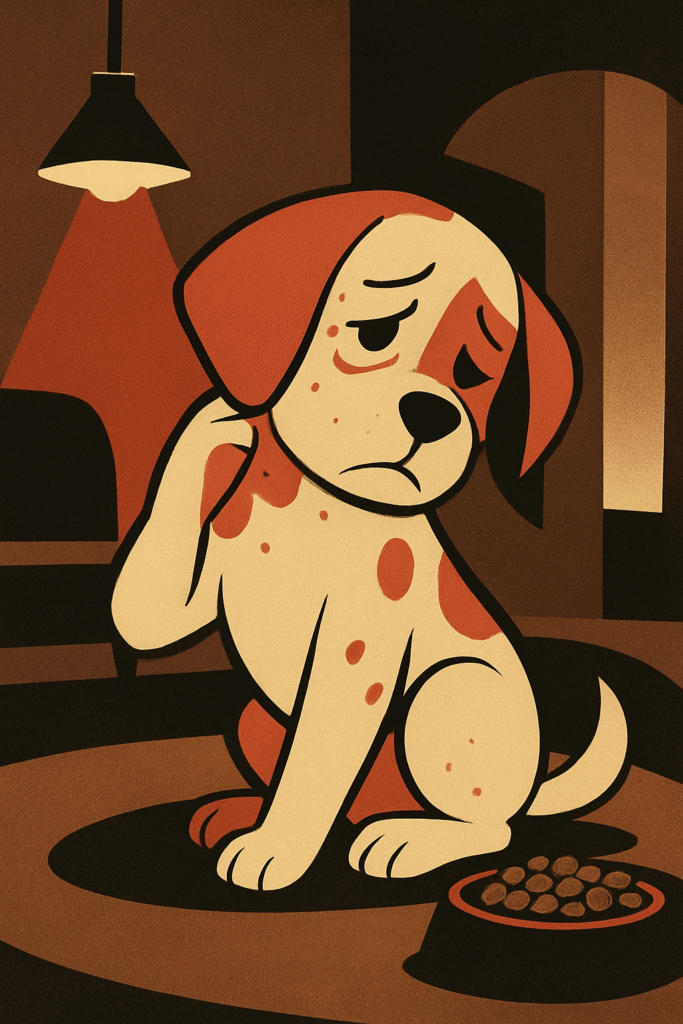
Feeling Prepared for the Vet? The first veterinary visit can be overwhelming, but it doesn’t have to be. Being prepared is the key to a smooth and successful appointment. For a detailed breakdown of the procedures, a list of essential questions to ask, and tips on how to prepare your puppy, your next step is to read First Vet Visit: What to Expect & Ask.
